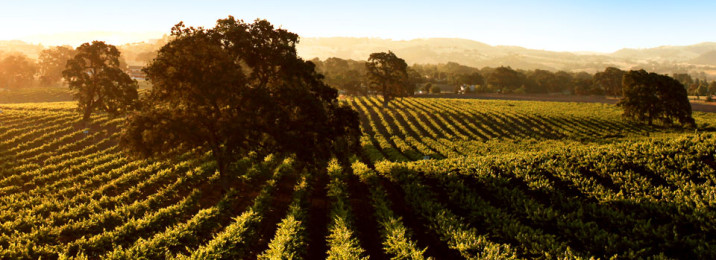Landscaping wineries with Native Plants: The Perfect Pairing
Creating an inviting environment for your customers through the functionality of a wine tasting room is a vitale step in creating a captivating experience through an interactive, fun, and relaxing atmosphere. Anticipating the needs and wants of your customers in advance can boost sales due to the increasing popularity of wine tourism, and their experience goes beyond your marketing and customer service techniques.
The physical appearance of your gathering place should be welcoming, and make the lasting impression you want to keep your customers coming back for more. And this goes well beyond your wine presentation techniques. Take advantage of both the climate of the Central Coast to create an atmosphere that draws your customers in to enjoy the beauty of simple landscaping to create a peaceful experience for both the wine enthusiast, gardeners, and artists alike.
Plants that are easy to maintain in dry climates, but provide stunning backdrops of shape and color, are the ideal vegetative choices for your wine tasting room pairings. Simplicity and beauty should be your focus during your planning process, and include the process of landscaping care concerning maintenance and watering during the growing season. A well manicured area shows attention to detail and provides a degree of respect to your customers overall experience. Ideally you will want your plans to mature into something that only require simple trimming needs from time to time to keep your plants the main attraction.
The Central Coast is unique in it’s views. Rolling hills, stunning sunsets, and panoramic vistas overlooking the ocean can all be highlighted using a mix of the native plants found along the coast. Often downplayed due to their simplicity, native plants are typically drought tolerant, and compliment their backdrop with unique shapes and bright colors. Xerophilous specimens, or plants capable of thriving in hot, dry climates, should make up the majority of your gardening blueprint. Below I’ll explore some the more popular choices that require very little watering after establishment, provide lasting pops of color, and interesting silhouettes to take into consideration.
Lavender
Although not native to the United States this fragrant, and eye catching evergreen thrives along the Mediterranean coastlines, similar to the California local. It is a popular and heady choice to incorporate into your landscaping designs to hedge your walkways for a truly unique olfactory experience.
Floribunda Bush Roses
A relation to wild roses, Floribunda thrive in well drained, sunny spots, and with proper pruning care bloom prolifically throughout the growing season. Roses can serve to direct the eye, and were one traditionally planted in vineyards to show the health of producing vines.
Oleander
Drought resistant and hardy, this evergreen is truly a showstopping beauty. The bright pinks and whites of these large bushes can often be quite fragrant as well, and bloom for extended periods of time. Keep them pruned and shaped in order to provide order to their growth as they can become leggy if grown too quickly.
Rosemary
A pungent herb, rosemary is grown mostly for its scent and use in various culinary dishes. Another evergreen, it produces clusters of lavender flowers in late summer/early autumn. This is a drought resistant plant that thrives in well drained soils and can survive chills well, but doesn’t often do well in freezing climates. Because of this is is a popular container plant that pairs well with blooming annuals to lighten up dark recesses in certain growing zones.
Eucalyptus
Certain species of eucalyptus can grow rather large (think a couple hundred feet tall), but dwarf versions exist as well, and make uniquely shaped shade trees depending on the area you are looking to fill. Their twisting, and sometimes colorful, branches and barks are a popular addition to many California landscapes. As a tropical species, most stay evergreen year round, and produce a fragrant smell that is helpful in warding off many biting insects.
Olive trees
A smaller tree, olives only grow to about 20 feet, and grow well along the coastal areas in California. As they age their trunks become gnarled and twisted, lending visual interest and texture to vineyard landscaping. They are also self-pollinating, as are grapes, which makes them a good companion plant in a maturing vineyard.
Agapanthus
Otherwise known as Lily of the Nile, Agapanthus thrive in well drained soils, and can tolerate a full sun to partial shade existence in their growing habitats. They are a tender bulb however, and will not do well if overwintered in ground in areas of freeze, but are certainly worth having around in containers for their showy lavender blossoms.
Succulents
Succulents, such as hen and chicks, can be a bountiful addition to your rocky, dry areas due to their unique shapes and often colorful foliage. Succulents need very little watering, and provide visual texture for areas that require vegetation, but are difficult to care for.
Groundcovers
For sloping areas, consider low groundcover varieties to help both bind the soil and prevent washaway, as well as greenery and depth of interest. Most groundcover vegetation stands only one to two feet in height (or lower) and survives harsh climate conditions. Consider Maritime California Lilac, Pacific Mist Juniper, or Radiant Manzanita for year round color.
Native Grasses
Grasses can add a pop of color and height to otherwise washed out areas with little to no maintenance needed from year to year. Reds and bright yellows are not uncommon in foliage, nor is the colorful stalks produced that also provide winter interest.
Although there are many choices to consider when planning your landscaping design, start simply and incorporate the plants that are visually appealing and blend well into your established landscape. Consider what you want to highlight for your guests in the view of your vineyard, and use plants to draw their eye to those areas of interest.
Remember, creating a scenic, cultural reality around your customer’s wine tasting experience is an important part of their memorable visit.
Article Provided by: Timothy Moore Backyard Boss

